Lawrence Yang
age ~49
from Lake Hiawatha, NJ
- Also known as:
-
- Lawrence Yarg
- Laurence Yang
- Larry Yang
- Yien-Chin Yang
- Lawrence Tang
Lawrence Yang Phones & Addresses
- Lake Hiawatha, NJ
- Tucson, AZ
- 9 Braemar Ct, Parsippany, NJ 07054 • 9738871881
- Morris Plains, NJ
- Berkeley, CA
- Montville, NJ
- 9 Braemar Ct, Parsippany, NJ 07054 • 9737273060
Work
-
Company:7-eleven incJul 2012
-
Position:Senior financial analyst/mergers & acquisitions
Education
-
School / High School:New York University, Stern School of Business- New York, NY2014
-
Specialities:Master of Business Administration in Finance
Specialities
Chapter 7 Bankruptcy
Us Patents
-
Circuitry That Detects A Phase Difference Between A First, Base, Clock And A Second, Derivative, Clock Derived From The Base Clock
view source -
US Patent:57035024, Dec 30, 1997
-
Filed:May 30, 1996
-
Appl. No.:8/652700
-
Inventors:Harsimran S. Grewal - San Francisco CA
Lawrence R. Yang - Palo Alto CA -
Assignee:Sun Microsystems, Inc. - Mountain View CA
-
International Classification:H03D 1300
-
US Classification:327 3
-
Abstract:A phase detection circuit detects a phase relationship between a first clock signal, characterized by transitions of a given polarity (e. g. , rising edges) at a first frequency, and a second clock signal, characterized by transitions of the given polarity at a second frequency that is an integer multiple of the first frequency. Transition indication circuitry generates a transition indication signal responsive to transitions, of the given polarity, of the second clock signal. The transition indication signal includes a transition indication (e. g. , a pulse) corresponding to each n. sup. th transition, of the given polarity, of the second clock signal and at a phase that is selectable relative to the first clock signal in response to a transition indication control signal. Sampling circuitry (e. g. , one or more latches) samples the transition indication signal responsive to each transition, of the given polarity, of the first clock signal to generate a transition indication sample.
-
Displaying Relevant User Interface Objects
view source -
US Patent:20220417358, Dec 29, 2022
-
Filed:Apr 25, 2022
-
Appl. No.:17/728725
-
Inventors:- Cupertino CA, US
Imran CHAUDHRI - San Francisco CA, US
Jonathan R. DASCOLA - San Francisco CA, US
Alan C. DYE - San Francisco CA, US
Christopher Patrick FOSS - San Francisco CA, US
Daniel C. GROSS - San Francisco CA, US
Chanaka G. KARUNAMUNI - San Jose CA, US
Stephen O. LEMAY - Palo Alto CA, US
Natalia MARIC - San Francisco CA, US
Christopher WILSON - Sonoma CA, US
Lawrence Y. YANG - Bellevue WA, US -
International Classification:H04M 1/72454
G06F 3/0488
G06F 1/16
G06F 3/01
H04M 1/72457
G06F 3/0346
G06F 3/0362
G06F 3/04817
G06F 3/0482
G06F 3/04883 -
Abstract:Techniques for displaying relevant user interface objects when a device is placed into viewing position are disclosed. The device can update its display in response to a user approaching a vehicle. Display updates can be based on an arrangement of user interface information for unlocking the vehicle.
-
Stopwatch And Timer User Interfaces
view source -
US Patent:20220357825, Nov 10, 2022
-
Filed:Apr 25, 2022
-
Appl. No.:17/728801
-
Inventors:- Cupertino CA, US
Christopher WILSON - San Francisco CA, US
Jonathan R. DASCOLA - San Francisco CA, US
Gary Ian BUTCHER - San Jose CA, US
Imran CHAUDHRI - San Francisco CA, US
Alan C. DYE - San Francisco CA, US
Stephen O. LEMAY - Palo Alto CA, US
Natalia MARIC - San Francisco CA, US
Lawrence Y. YANG - Bellevue WA, US -
International Classification:G06F 3/0484
G04F 10/00
G06F 3/0488
G06F 3/0482
G06F 3/04883
G06F 3/04817
G06F 3/04842
G06F 3/0481
G06F 3/0485 -
Abstract:An electronic device may display a first lap time representation, and may move the first lap time representation in accordance with a first amount of elapsed time. While moving the first lap time representation, the electronic device may detect a lap input. In response to the lap input, the electronic device may cease movement of the first lap time representation, display a second lap time representation, and move the second lap time representation in accordance with a second amount of elapsed time. A relative positioning of the first lap time representation and the second lap time representation may correspond to a difference between a first lap time and a second lap time. In some embodiments, the electronic device may update the timescales of lap time representation(s) in accordance with a rotational input. In some embodiments, the electronic device may update a timer duration setting in accordance with a rotational input.
-
User Interface For Receiving User Input
view source -
US Patent:20220291793, Sep 15, 2022
-
Filed:May 27, 2022
-
Appl. No.:17/827004
-
Inventors:- Cupertino CA, US
Jonathan R. DASCOLA - San Francisco CA, US
Imran CHAUDHRI - San Francisco CA, US
Anton M. DAVYDOV - Gilroy CA, US
Jonathan P. IVE - San Jose CA, US
Stephen O. LEMAY - Palo Alto CA, US
Kevin LYNCH - Woodside CA, US
Bas ORDING - San Francisco CA, US
Wan Si WAN - Sunnyvale CA, US
Lawrence Y. YANG - Bellevue WA, US -
International Classification:G06F 3/0485
G06F 3/023
G06F 3/0362
G06F 3/038
G06F 3/041
G06F 3/04817
G06F 3/0482
G06F 3/0483
G06F 3/0484
G06F 3/04845
G06F 3/04883
G06F 3/04886
G06F 8/38
H04M 1/724 -
Abstract:The present disclosure relates to user interfaces for receiving user input. In some examples, a device determines which user input technique a user has accessed most recently, and displays the corresponding user interface. In some examples, a device scrolls through a set of information on the display. When a threshold criteria is satisfied, the device displays an index object fully or partially overlaying the set of information. In some examples, a device displays an emoji graphical object, which is visually manipulated based on user input. The emoji graphical object is transmitted to a recipient. In some examples, a device displays paging affordances that enlarge and allow a user to select a particular page of a user interface. In some examples, the device displays user interfaces for various input methods, including multiple emoji graphical objects. In some examples, a keyboard is displays for receiving user input.
-
Systems, Devices, And Methods For Dynamically Providing User Interface Controls At A Touch-Sensitive Secondary Display
view source -
US Patent:20220244900, Aug 4, 2022
-
Filed:Mar 25, 2022
-
Appl. No.:17/705186
-
Inventors:- Cupertino CA, US
Duncan R. Kerr - San Francisco CA, US
John B. Morrell - Los Gatos CA, US
Lawrence Y. Yang - Bellevue WA, US
Eric Lance Wilson - San Jose CA, US
Adam S. Meyer - Cupertino CA, US -
International Classification:G06F 3/14
G06F 1/16
G06F 3/023
G06F 3/04883
G06F 3/048
G06F 3/04886
G06F 3/01
G06F 3/041
G06F 3/0482
G06F 3/04817
G06F 3/04845
G06F 3/0485
G06F 3/02
G09G 5/12 -
Abstract:An example method occurs at a computing system comprising one or more processors, memory, a first housing that includes a primary display, and a second housing at least partially containing: (i) a physical keyboard and (ii) a respective key that is adjacent to at least one key of the physical keyboard and the respective key including a fingerprint sensor. The method includes receiving an input at the respective key, and in accordance with a determination that the input at the respective key is an input of a first type, initiating a process for logging out, restarting, and/or powering-off portable computing system. The method also includes that receiving an input at the respective key, and in accordance with a determination that the input at the respective key is an input of a second type, performing an operation associated with a fingerprint detected by the fingerprint sensor associated with the respective key.
-
Reduced Size User Interface
view source -
US Patent:20230049771, Feb 16, 2023
-
Filed:Aug 1, 2022
-
Appl. No.:17/878792
-
Inventors:- Cupertino CA, US
Christopher Patrick FOSS - San Francisco CA, US
Lawrence Y. YANG - San Francisco CA, US
Alan C. DYE - San Francisco CA, US
David Chance GRAHAM - Columbus OH, US
Jonathan P. IVE - San Francisco CA, US
Kevin LYNCH - Woodside CA, US -
International Classification:G06F 3/0482
G06F 3/04847
G06F 3/04845
G06F 3/0488
G06F 3/0362
G06F 3/01
G06F 3/04842 -
Abstract:Techniques and user interfaces for accessing, navigating, and displaying photos on an electronic device.
-
Remote User Interface
view source -
US Patent:20230052490, Feb 16, 2023
-
Filed:Oct 27, 2022
-
Appl. No.:17/975141
-
Inventors:- Cupertino CA, US
Stephen O. LEMAY - Palo Alto CA, US
Alan C. DYE - San Francisco CA, US
Christopher Patrick FOSS - San Francisco CA, US
Lawrence Y. YANG - Bellevue WA, US
David Chance GRAHAM - Columbus OH, US
Jonathan P. IVE - San Francisco CA, US -
International Classification:G06F 3/04842
G06F 3/04817
G06F 3/04883
G06F 3/0488 -
Abstract:Target electronic devices can be remotely controlled using a personal electronic device are disclosed. The personal electronic device can identify target devices that are responsive to remote control. The personal electronic device displays graphical user interface objects that, when selected, cause the personal electronic device to instruct the target electronic device to perform an operation.
-
User Interface For Manipulating User Interface Objects
view source -
US Patent:20230024225, Jan 26, 2023
-
Filed:Sep 22, 2022
-
Appl. No.:17/950823
-
Inventors:- Cupertino CA, US
Imran CHAUDHRI - San Francisco CA, US
Jonathan R. DASCOLA - San Francisco CA, US
Alan C. DYE - San Francisco CA, US
Christopher Patrick FOSS - San Francisco CA, US
Aurelio GUZMAN - San Jose CA, US
Chanaka G. KARUNAMUNI - San Jose CA, US
Duncan Robert KERR - San Francisco CA, US
Stephen O. LEMAY - Palo Alto CA, US
Natalia MARIC - San Francisco CA, US
Christopher WILSON - Sonoma CA, US
Eric Lance WILSON - San Jose CA, US
Lawrence Y. YANG - Bellevue WA, US
Gary Ian BUTCHER - Los Gatos CA, US
Anton M. DAVYDOV - Gilroy CA, US
Dylan Ross EDWARDS - San Jose CA, US
Jonathan P. IVE - San Jose CA, US
Zachery KENNEDY - Weston FL, US
Nicholas V. KING - San Jose CA, US
Daniel Trent PRESTON - San Jose CA, US -
International Classification:G06F 3/0485
G06F 3/04886
G06F 3/0482
G06F 1/16
G04G 21/08
G06F 3/04817
G06F 3/0362
G06F 3/04883
G06F 3/023
G06F 3/0488 -
Abstract:User interface navigation on a personal electronics device based on movements of a crown is disclosed. The device can select an appropriate level of information arranged along a z-axis for display based on crown movement. The navigation can be based on an angular velocity of the crown.
Resumes

Summer Associate At Ubs Investment Bank
view sourceLocation:
Greater New York City Area
Industry:
Investment Banking

Software Development For Dsp And Embedded Systems At Alcatel-Lucent
view sourceLocation:
Greater New York City Area
Industry:
Telecommunications

Senior Software Engineer
view sourceLocation:
16 Grace Rd, Lake Hiawatha, NJ 07034
Industry:
Defense & Space
Work:
Alcatel-Lucent since Jul 2000
Software Development Engineering
Raytheon Jun 1999 - Jul 2000
RF Subsystem Engineer
San Francisco Public Utilities Commission Jun 1997 - Dec 1997
Co-Op Intern
Software Development Engineering
Raytheon Jun 1999 - Jul 2000
RF Subsystem Engineer
San Francisco Public Utilities Commission Jun 1997 - Dec 1997
Co-Op Intern
Education:
New Jersey Institute of Technology 2004 - 2010
MS, Computer Engineering University of California, Berkeley 1994 - 1998
BS, EECS
MS, Computer Engineering University of California, Berkeley 1994 - 1998
BS, EECS
Skills:
Embedded Systems
Lte
Digital Signal Processors
Wireless
Perl
Umts
Integration
Linux
C
Clearcase
Embedded Software
Wcdma
Rtos
Wireless Technologies
Open Source Software
Unix
Dsp
Universal Mobile Telecommunications System
Telecommunications
Subversion
Real Time Operating Systems
Problem Solving
Software Configuration Management
Shell Scripting
3G
Software Development
4G
Signal Processing
Debugging
Electrical Engineering
Agile Methodologies
System on A Chip
Software Documentation
Continuous Integration
Documentation
Firmware
Teamwork
Customer Support
Static Analysis
Wikis
Design Documents
Jtag
Physical Layer
Design Documentation
Layer 1
Tcl
Wiki
Unit Testing
Test Driven Development
Tcl Tk
Wideband Code Division Multiple Access
Cellular Communications
3Gpp
Lte
Digital Signal Processors
Wireless
Perl
Umts
Integration
Linux
C
Clearcase
Embedded Software
Wcdma
Rtos
Wireless Technologies
Open Source Software
Unix
Dsp
Universal Mobile Telecommunications System
Telecommunications
Subversion
Real Time Operating Systems
Problem Solving
Software Configuration Management
Shell Scripting
3G
Software Development
4G
Signal Processing
Debugging
Electrical Engineering
Agile Methodologies
System on A Chip
Software Documentation
Continuous Integration
Documentation
Firmware
Teamwork
Customer Support
Static Analysis
Wikis
Design Documents
Jtag
Physical Layer
Design Documentation
Layer 1
Tcl
Wiki
Unit Testing
Test Driven Development
Tcl Tk
Wideband Code Division Multiple Access
Cellular Communications
3Gpp
Interests:
Soccer
Linux
Makerspaces
Hackerspaces
Foss
Telecommunications
Environment
Science and Technology
Internet of Things
Running
Open Hardware
Human Rights
Wireless Sensor Networks
Embedded Systems
Civil Rights and Social Action
Technology and Society
Poverty Alleviation
Hiking
Disaster and Humanitarian Relief
Dsp
Economic Empowerment
Meditation
Mobile Wireless Networks
Dharma
Linux
Makerspaces
Hackerspaces
Foss
Telecommunications
Environment
Science and Technology
Internet of Things
Running
Open Hardware
Human Rights
Wireless Sensor Networks
Embedded Systems
Civil Rights and Social Action
Technology and Society
Poverty Alleviation
Hiking
Disaster and Humanitarian Relief
Dsp
Economic Empowerment
Meditation
Mobile Wireless Networks
Dharma
Languages:
Mandarin
English
German
English
German
Certifications:
Edx Verified Certificate For the Science of Happiness
Amateur Radio License, Technician
Devops White Belt For Devops Awareness | It00062-K-0001
Edx
Amateur Radio License, Technician
Devops White Belt For Devops Awareness | It00062-K-0001
Edx

Lawrence Yang
view source
Lawrence Yang
view source
Mortgage Strategist At Goldman Sachs
view sourceLocation:
Greater New York City Area
Industry:
Investment Banking

Owner, Make Me Take Me, Inc.
view sourceLocation:
Greater New York City Area
Industry:
Arts and Crafts

Student At School Of Advanced Study, U. Of London
view sourceLocation:
United States
Industry:
Think Tanks
Lawyers & Attorneys

Lawrence Yang - Lawyer
view sourceOffice:
Law Offices of Lawrence Bautista Yang
Specialties:
Chapter 7 Bankruptcy
ISLN:
911571101
Admitted:
1993
Medicine Doctors
Classmates

Lawrence Yang
view sourceSchools:
Charlotte Wood Middle School Danville CA 1998-2001
Community:
Donna Farley, Vickie Anderson, Julie Langon

Charlotte Wood Middle Sch...
view sourceGraduates:
Chad Thompson (1991-1993),
Lawrence Yang (1998-2001),
Meghan Howard (2000-2002),
Jacob Thomases (1991-1995),
James Corcoran (1995-1997)
Lawrence Yang (1998-2001),
Meghan Howard (2000-2002),
Jacob Thomases (1991-1995),
James Corcoran (1995-1997)
Youtube
Flickr

Lawrence Wei Yang
view source
Lawrence Yang
view source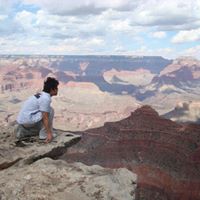
Lawrence Yang
view source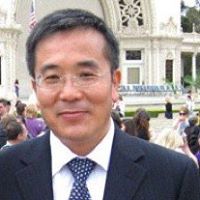
Lawrence Yang
view source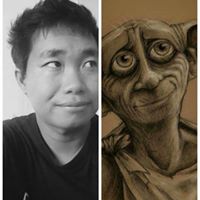
Lawrence Yang
view source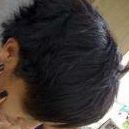
Lawrence Yang
view source
Lawrence Yang
view source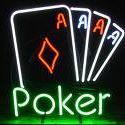
Lawrence Yang
view sourceMyspace
Googleplus

Lawrence Yang
Lived:
San Francisco, CA
Naperville, IL
Skokie, IL
Champaign, IL
Naperville, IL
Skokie, IL
Champaign, IL
Work:
Apple - Information Architect
AKQA
Tribal DDB
Apple
AKQA
Tribal DDB
Apple
Education:
University of Illinois at Urbana Champaign
About:
Information architect by day, painter by night.

Lawrence Yang
Work:
DACA - Swim Instructor (2010)
Education:
California Polytechnic State University - Mechanical Engineering

Lawrence Yang

Lawrence Yang

Lawrence Yang
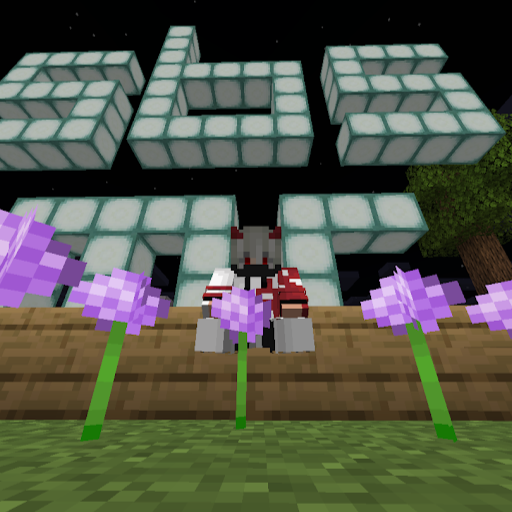
Lawrence Yang
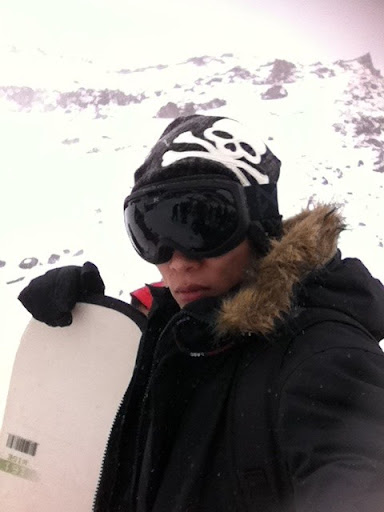
Lawrence Yang

Lawrence Yang
Get Report for Lawrence Yang from Lake Hiawatha, NJ, age ~49














